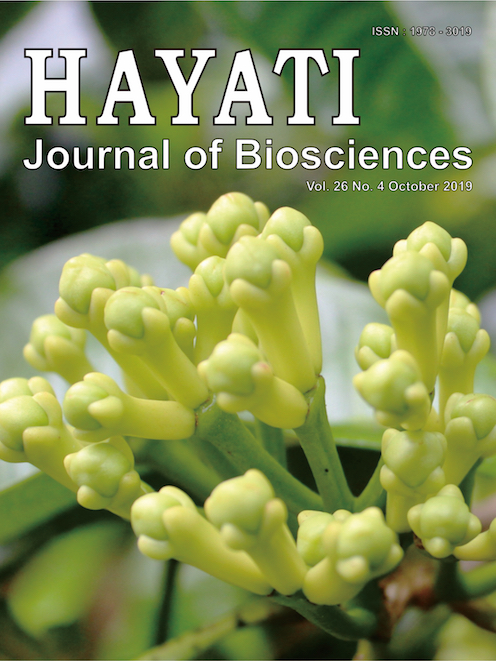Oil Palm Phytochrome-Interacting Factor4 (PIF4) Gene is Conserved and Highly Expressed During Somatic Embryogenesis
Abstract
Oil palm is used in food, fuel and cosmetic industries. Tissue culture is the best way to propagate oil palm; unfortunately the somatic embryogenesis during tissue culture takes long time. The molecular mechanism of somatic embryogenesis in oil palm remains unknown. Recent research reported that auxin plays an important role in early and post-embryogenic plant. PHYTOCHROME-INTERACTING FACTOR4 (PIF4) regulates levels of auxin and the expression of key auxin biosynthesis genes. Our research aims to characterize oil palm PIF4 gene. Thus, we cloned EgPIF4, analyzed the domain using bioinformatic and examined the expression of EgPIF4 during somatic embryogenesis at different tissue including callus and somatic embryo stages; globular, torpedo, cotyledon, and plantlet stage using real-time PCR method. The result showed that EgPIF4 gene comprised 1,737 bp with 9 exons, which encode 578 amino acid residuals. It contains a conserved domain called basic helix-loop-helix domain. EgPIF4 has high level of expression at somatic embryogenetic stage specifically globular and torpedo stage suggested that EgPIF4 plays an important role during somatic embryogenesis. The future characterization of EgPIF4 function in oil palm will help to understand somatic embryogenesis process and facilitate the improvement of the oil palm tissue culture.Downloads
HAYATI J Biosci is an open access journal and the article's license is CC-BY-NC. This license lets others distribute, remix, tweak, and build upon author's work, as long as they credit the original creation. Authors retain copyright and grant the journal/publisher non exclusive publishing rights with the work simultaneously licensed under a https://creativecommons.org/

























.png) IPB University
IPB University Department of Biology
Department of Biology The Indonesian Biological Society
The Indonesian Biological Society 

